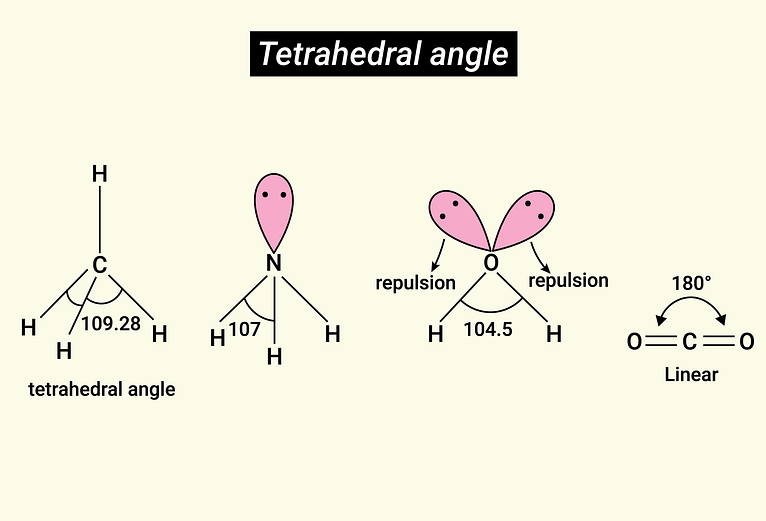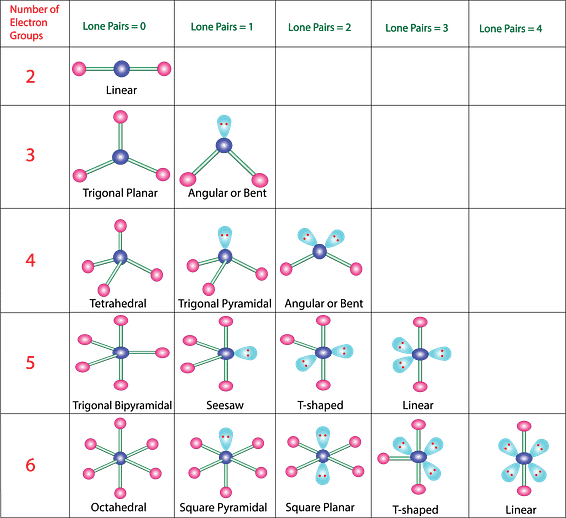Valence Shell Electron Pair Reduction (VSEPR)
VSEPR (pronounced VESPR) is a very important tool to predict molecular geometry. Molecular geometry is used to help figure out many important aspects of compounds such as their color, magnetic properties, phase of matter, and even if enzymes in the body will react with them.
Electrons in the highest energy shell or level around an atom push away from (or repel) each other. That changes the physical shape or geometry of groups of atoms that are combined together. Some compounds, such as CO2, are straight, while water, H2O, is bent. Why? Electrons pushing away from each other (electron repulsion). Electron repulsion is a major influencer of molecular shape and is critical to how many biological functions work.
When released a student will be able to physically build a compound with various atoms. The covalent bonds and any electrons that are not bonded will automatically shift to the appropriate angles. We anticipate that information about the bond angles and other information will also be sent wirelessly to a phone, pad, or computer. The student will be able to quickly experiment, explore, and learn VSEPR faster than ever before.
This is still in development, but if you would like to know when it is ready, please click the link below to learn more.

Electron pair repulsion pushes the hydrogen atoms closer together resulting in a smaller bond angle.

Different molecular geometries for various combinations of electron groups that are bonded and non-bonded (lone pairs)
